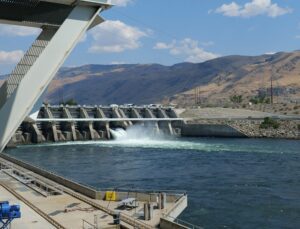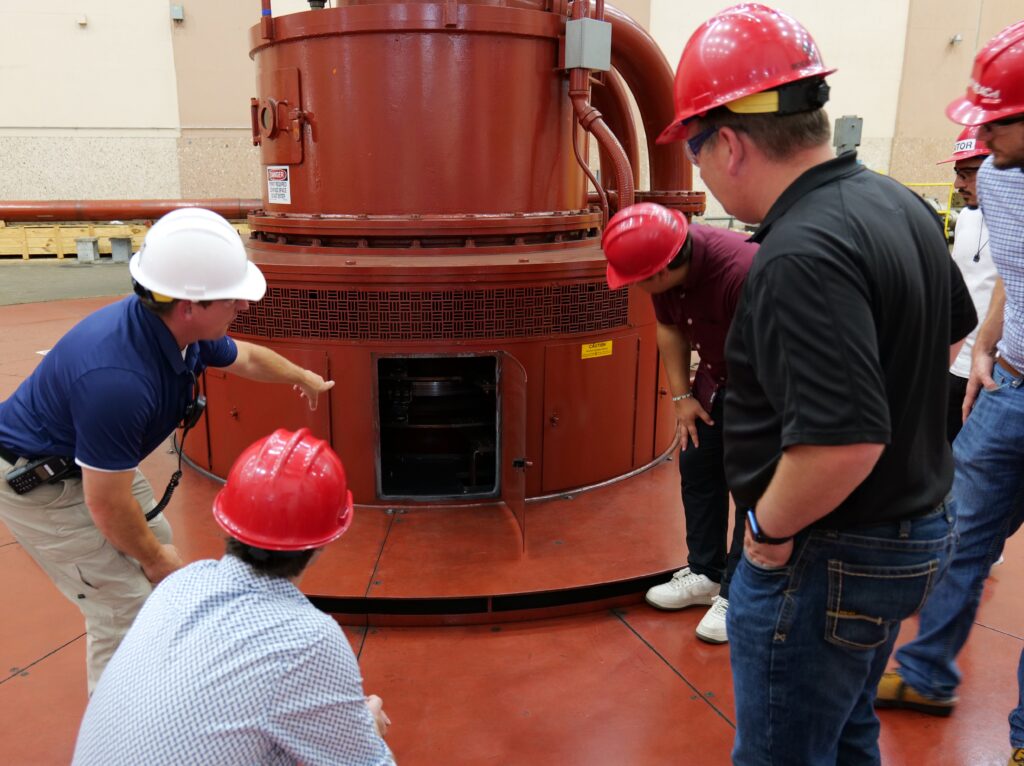Water-to-Watts: How Our Power is Made
More than 85% of electricity in Jefferson County comes from hydroelectric sources.

Our power is generated by utilities, federal agencies and providers such as Energy Northwest (nuclear energy) across the northwest with the power travelling via Bonneville Power Administration (BPA) transmission lines and substations. The vast majority of our power stems from the series of 11 dams along the Columbia River, one of which is the Rocky Reach Dam in East Wenatchee.
Each year, Jefferson PUD partners with Energy Northwest’s Public Power Internship program to provide college students with an inside look at utility operations. The PUD’s summer interns, Max Allworth-Miles (broadband department) and Isaac Gurney (engineering department), along with fellow utility interns from across the state, received an in-depth tour of Chelan PUD’s Rocky Reach Dam.
Rocky Reach, which began commercial power generation in late-1961, has undergone notable changes over the decades to keep pace with demand. In 1964 the Columbia River Treaty was ratified to reduce the risk of flooding to cities, to aid regional growth, and to increase hydroelectric power production. To meet this urban growth Chelan PUD added four new generators to Rocky Reach, bringing its generator count to eleven. Recently, turbines at the dam have seen upgrades that lead to more efficient generation.
Hydroelectricity is generated by spilling water from an upstream reservoir on the river, through a dam. The water in this reservoir has potential energy because of its elevation relative to the water beyond the dam. When water is released, it flows through the dam, spinning a series of giant turbines, like those of a boat propeller. Each turbine is connected to a generator, so as they spin, so do the rotors of the generators, creating electricity. Once the electricity is generated, it travels from the dam via transmission lines to waiting substations and then to your homes.

It may be one of the smaller dams on the Columbia River, but Rocky Reach is still massive. The dam is nearly one-third of a mile in length and 125 feet high. Fun fact: Just one of its eleven 1,349 megawatt generators can make more than enough power to supply all of Jefferson County with electricity year-round. It’s an incredible feat to construct, especially in the 1950s. The total cost of Rocky Reach in 1956 was $273.1M dollars ($3.1B in todays cost).
The PUD team experienced the enormous Rocky Reach generators up close. To maintain a long lifespan, generators undergo regular maintenance. Inside, interns were just feet away from a section of the rapidly spinning turbine generator shaft connecting water-driven blades with the rotor.
A dam powerhouse is a cohesive mix of old and new technology where engineers continually upgrade aging infrastructure for future demand.
“It’s shocking to see the size of some of this equipment up close,” said Gurney. “The scale they’re working at is super impressive.”
